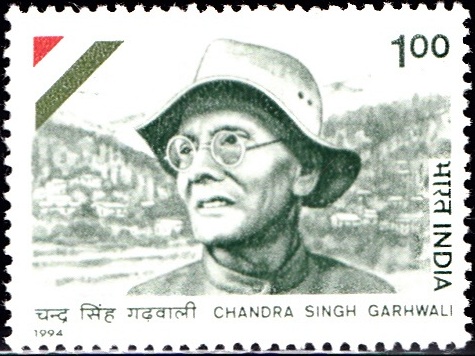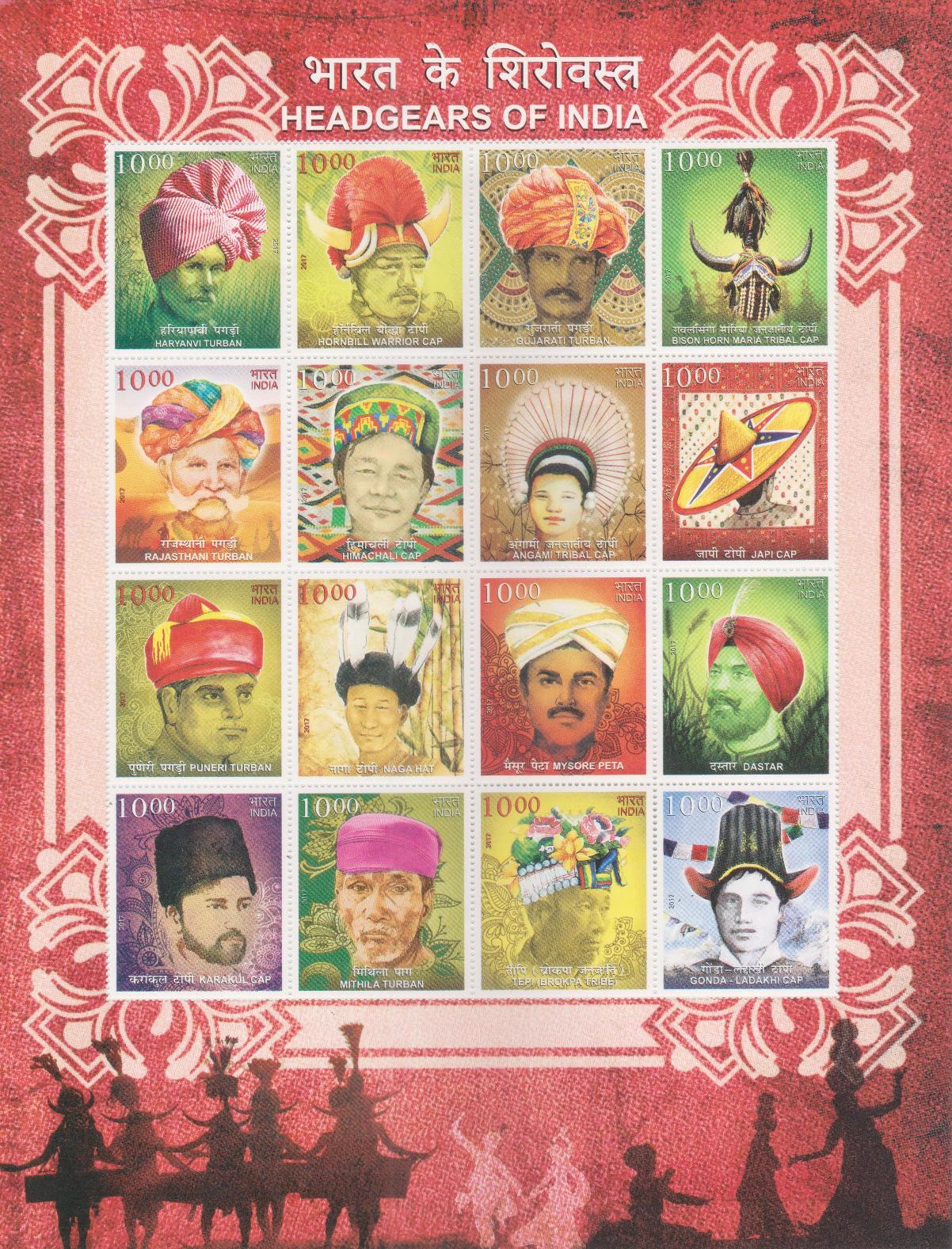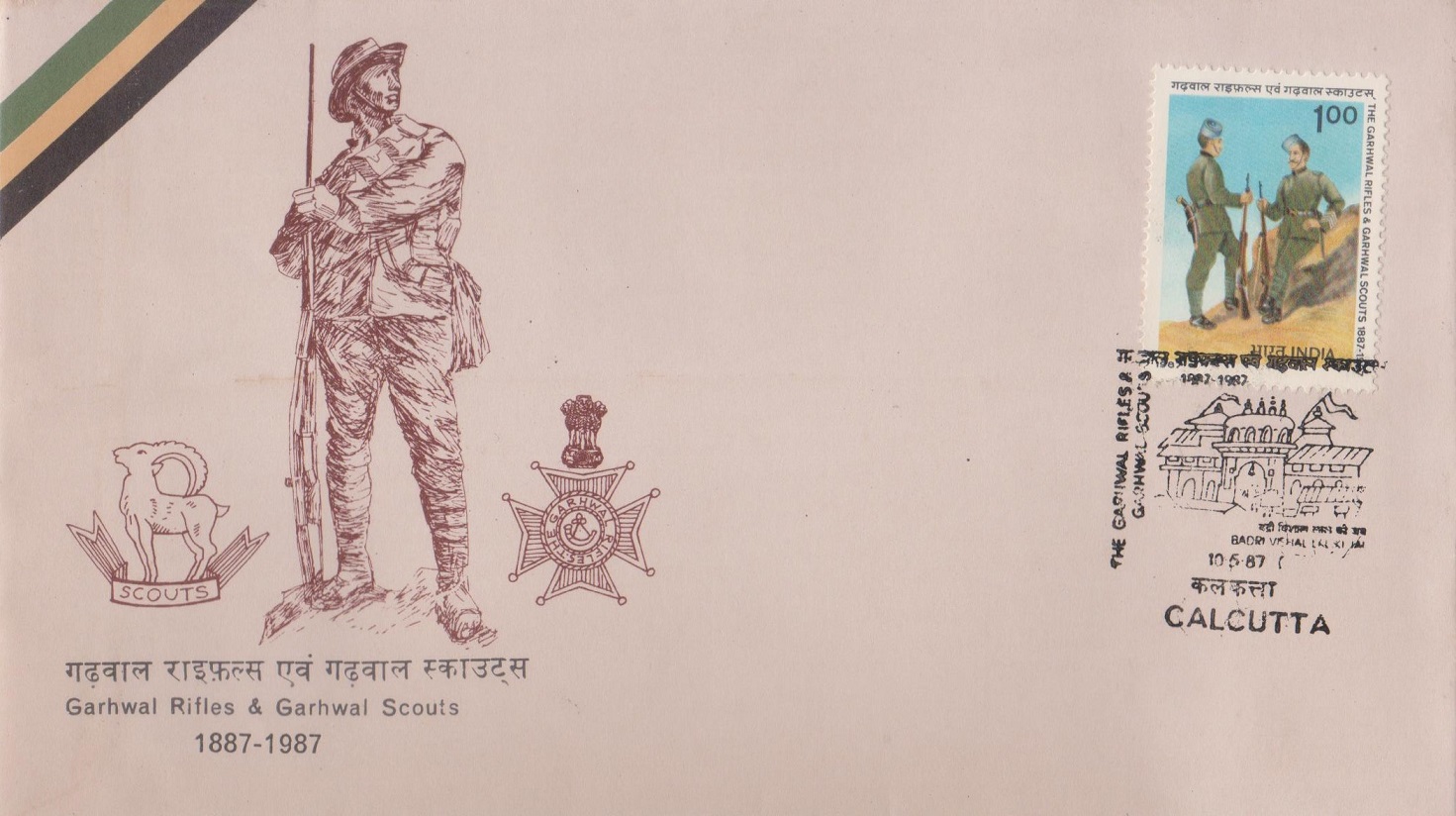
Chandra Singh Garhwali
A commemorative postage stamp on the Birth Centenary of Veer Chandra Singh Garhwali, an Indian revolutionary, hero of Peshawar Kand :
 Issued by India
Issued by India
Issued on Apr 23, 1994
Issued for : Chandra Singh Garhwali, the hero of Peshawar, is immortalised in the annals of Indian history. The Department of Posts takes pride in bringing out a commemorative postage stamp in tribute to this freedom fighter.
Design Credits :
Stamp : Designed by ISP Nashik on the basis of material supplied by Akhil Garhwal Sabha, Dehradun (Regd).
FDC : Shanka Samanta
Cancellation : Smt. Alka Sharma, Deptt. of Posts.
Type : Stamp, Mint condition
Colour : Multi Colour
Denomination : 100 Paise
Overall size : 3.91 x 2.90 cms.
Printing size : 3.55 x 2.54 cms.
Perforation : 13 x 13
Paper : Indigenous Un W/M Adhesive Gravure Coated gummed Stamp Paper in sheets 50.8 x 50.3 cms.
Number of stamps Printed : 0.6 Million
Number per issue sheet : 35
Printing Process : Photogravure
Printer : India Security Press
Name : Chandra Singh Garhwali
Born on Dec 24, 1891 at Meason, Patti Chauthan, Tehsil Thalisain, District Garhwal, Uttarakhand, India
Died on Oct 1, 1979
About :
- Chandra Singh Garhwali was born on the 24th of December 1891 in Masson, Patti Chauthan, Tehsil Thalisain, District Garhwal. While his early education was at home, his real teacher was the rich experience that he gathered in his wide and varied travels, his service in the army and the long terms of imprisonment which he faced with rare courage and fortitude in his fight for the freedom of the country.
- When Chandra Singh Garhwali first met Mahatma Gandhi, the freedom struggle and the rising sense of nationalism in the country, had already begun to make a deep impression on his mind. It is said that at a public meeting in June 1929 at Bageshwar, Almora, the army cap which Chandra Singh Garhwali was wearing attracted the attention of Gandhiji who remarked that he was not afraid of the army cap. Chandra Singh Garhwali replied by pointing out that, if he so wished, Gandhiji could change the cap. When Gandhiji presented him with a khadi topi, the soldier pledged to redeem the honour of the topi one day.
- Indeed, the opportunity to do so presented itself only too soon. On 20th April, 1930 a civil disobedience movement commenced in the North-West Frontier Province under the leadership of Khan Abdul Ghaffar Khan and a programme of demonstration and Satyagrah was planned for 23rd April 1930 in Peshawar. The British Government in its eagerness to suppress this movement of the Pathan’s at any cost, decided to deploy the army. Chandra Singh Garhwali and his men of the Garhwal Rifles quietly resolved to resist any order of their British Commander to fire upon unarmed people.
- On 23rd April, 1930 thousands of Pathans had gathered in front of the Kissakhani Bazar Police Chowki in Peshawar and the national flag was flying in their midst. The men of the Garhwal Rifles stood before the Pathans, and hundreds of people were looking on from their houses and roof tops. The British Captain warned the non-violent demonstrators to disperse but it had no effect on them. When, in a rush of anger he shouted, “Garhwali three rounds fire”, an equally firm voice was heard saying “Garhwali cease fire”, and the Garhwali soldiers lowered their rifles to the ground. Chandra Singh Garhwali’s voice rang out once again to declare that they would not fire upon unarmed people even if the Captain were to shoot them down. It was an amazing display of courage. An extraordinary moment in the history of our freedom struggle.
- Chandra Singh Garhwali was arrested along with his men and sentenced to life imprisonment. All his property was seized. After spending a long period of 11 years, 3 months and 18 days in various jails, where he came in contact with many national leaders, he was finally released in 1941. Imbued as he was with a deep sense of patriotism, Chandra Singh Garhwali continued to give leadership to the struggle for freedom and suffered further incarceration in jail. He returned to his home in Garhwal in 1946 and finally settled down in village Dhruvapur, Kotdwar in 1950. After a long illness he passed away in 1979.







